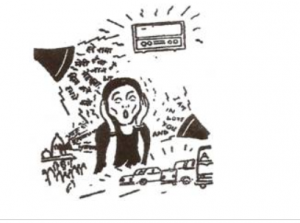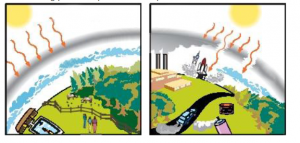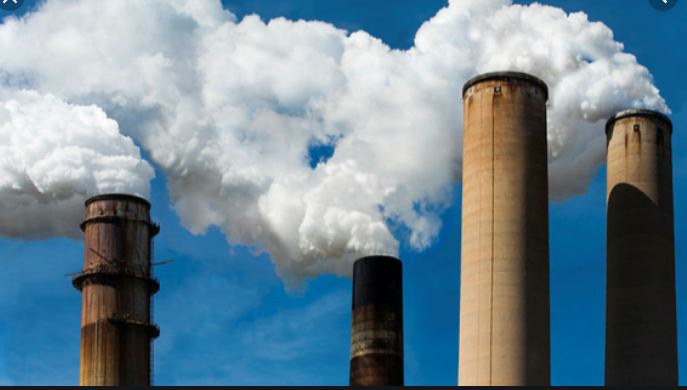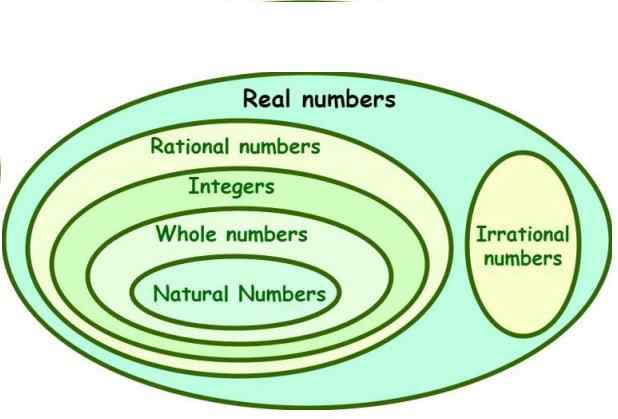Pollution ICSE Class-10 Concise Selina Biology Solutions Chapter-16 A Rising Environmental Problems. We Provide Step by Step Answer of Progress Check , MCQs, Very Short Answer Type, Short Answer Type, Long Answer Type Questions and Structured / Applications / Skill Type Questions of Exercise-16 Pollution A Rising Environmental Problems ICSE Class-10 . Visit official Website CISCE for detail information about ICSE Board Class-10.
Pollution ICSE Class-10 Concise Selina Biology Solutions Chapter-16 A Rising Environmental Problems
-: Select Topics :-
D. STRUCTURED / APPLICATION / SKILL TYPE
Selina Biology Solution for ICSE Class 10 Chapter-16, Pollution
A. MULTIPLE CHOICE TYPE
Question 1
Which one of the following is an example of pollutant?
(a) A rat entering your kitchen
(b) CO2 given out by the respiring organism
(c) The heat given out while cooking food
(d) The dust raised during road-cleaning
Answer 1
(d) The dust raised during road-cleaning
Question 2
Which one of the following is a “dirty” practice contributing to pollution and seriously needs stoppage by educating public?
(a) Too loud marriage musical bands
(b) Disposing of corpses in rivers
(c) Floating lighted earthen lamps (“deeyas”) in rivers
(d) Wearing scented/perfumed clothes
Answer 2
(b) Disposing of corpses in rivers
Question 3
One of the examples of radiation pollutants is
(a) Sulphur dioxide
(b) Ozone
(c) Iodine – 131
(d) Discarded fused electric bulbs
Answer 3
(b) Ozone
Concise Biology Solution for ICSE Class 10 Chapter-16, Pollution
B. VERY SHORT ANSWER TYPE
Question 1
Name the following pollutants:
(i) A pollutant which is mainly responsible for causing acid rain.
(ii) Any two chemicals leading to the formation of ozone holes.
(iii) The chemical element which caused minimata disease in Japan.
Answer 1
(i) SO2
(ii) Bromochlorodifluoromethane and chlorofluoromethane
(iii) Mercury
Question 2
Match the items in column I with the closely related ones in column II.
| Column I | Column II |
| (i) Chlorofluocarbons (CFCs)
(ii) Flyash (iii) Cow dung (iv) CO2 and methane (v) Sulphur dioxide (vi) Iodine – 131 |
(a) Global warming
(b) Biodegradable (c) Nuclear radiation pollutant (d) acid rain (e) Industrial waste (f) Ozone depletion |
Answer 2
| Column I | Column II (Answers) |
| (i) Chlorofluocarbons (CFCs)
(ii) Flyash (iii) Cow dung (iv) CO2 and methane (v) Sulphur dioxide (vi) Iodine – 131 |
(f) Ozone depletion
(e) Industrial Waste (b) Biodegradable (a) Global Warming (d) Acid Rain (c) Nuclear Radiation Pollutant |
Question 3
Fill in the blanks:
(i) Rubber particles and dust raised by running motor vehicles are examples of ……………… pollutants.
(ii) Too frequent exposure to ……………. in a medical diagnostic technique may damage chromosomes.
(iii) Thermal power plants give out a lot of …………… waste water.
(iv) Sewage is a liquid waste from ……………..
Answer 3
(i) vehicular air
(ii) X-ray
(iii) hot
(iv) domestic activities
Question 4
Identify biodegradable waste from the following:
peels of vegetables and fruits, metallic cans, broken plastic toys, broken glass cover, grass, paper, ball point pen refill
Answer 4
Biodegradable wastes: peels of vegetables and fruits, grass, paper
Question 5
What is the full form of 4 R’s?
Answer 5
4Rs – Reduce, Reuse, Recycle, Recover
ICSE Class 10th Selina Biology Solution for Chapter-16, Pollution
C. SHORT ANSWER TYPE
Question 1
List two major harmful effects of each of the following:
(i) Rivers contaminated with sewage.
(ii) Too much gaseous exhausts containing CO2 and SO2.
(iii) Pesticides such as DDT used in agriculture.
(iv) Prolonged noise such as the one produced by crackers
Answer 1
(i) Rivers contaminated with sewage:
(a) A number of waterborne diseases are produced by the pathogens present in polluted water, affecting humans as well as animals.
(b) The flora and fauna of rivers, sea and oceans is adversely affected.
(ii) Too much gaseous exhausts containing CO2 and SO2:
(a) The high concentration of CO2 in atmosphere has been the main component of the green house effect that has caused global warming i.e. the rise of atmospheric temperature in recent years. Global warming causes melting of snow caps rise in sea levels.
(b) SO2 is poisonous and irritates the respiratory system of animals and humans. A continuous exposure to SO2 has been reported to damage the lungs and increase the rate of mortality.
(c) SO2 is also responsible for acid rain
(iii) Pesticides such as DDT used in agriculture:
(a) Pesticides kill soil microbes which are responsible to recycle the nutrients in the soil.
(b) Pesticides can enter the food chain and affect the health of humans as well as animals. It can cause damage to the lungs and central nervous system, failures of reproductive organs and dysfunctions of the immune system, endocrine system, and exocrine system, as well as potential cancer risks and birth defects.
(iv) Prolonged noise such as the one produced by crackers :
(a) Prolonged exposure to the high decibel noise damages ear drums and can bring permanent hearing impairment.
(b) Noise pollution can lead to high blood pressure (hypertension), constant headache, lack of concentration.
Question 2
List the three major constituents of sewage.
Answer 2
Three major constituents of sewage:
1 Kitchen wastes
2 Sanitary waste
3 Waste from agricultural lands
Question 3
What are the common sources of oil spills, and how do they affect sea life.
Answer 3
The common sources of oil spills are: The overturned oil tankers, offshore oil mining and Oil Refineries.
The sea birds and sea animals sometimes get thick, greasy coating on their bodies due to oil spills.
- Sea birds may ingest their oil coated. This may irritate their digestive system, may damage liver and kidney.
- Oil spills lead to the death of sea birds as well as sea animals.
Question 4
Mention any two measures to minimise noise pollution.
Answer 4
Measures to minimise noise pollution:
(i) Use of loud speakers should be banned.
(ii) Airports should be located away from the residential area.
Question 5
Briefly mention about ‘Swachh Bharat Abhiyan’. When was it launched and what are its objectives?
Answer 5
‘Swachh Bharat Abhiyan’ is a significant cleanliness campaign started by the Government of India. It was officially launched on 2nd October 2014 by Indian Prime Minister Narendra Modi, who took the cleanliness pledge at India Gate in Delhi.
Objectives of Swachh Bharat Abhiyan:
- Clean the streets, roads and infrastructure of the country’s cities and towns
- Eliminate open defecation through the construction of individual, cluster and community toilets
- Establish accountable mechanisms of monitoring latrine use
- Achieve efficient solid and liquid waste management systems
Chapter-16, Pollution Selina Biology Solution for ICSE Class 10
D. STRUCTURED/APPLICATION/SKILL TYPE
Question 1
A lot of fish are dying near a sea shore. Describe any two possible causes.
Answer 1
(i) Industrial Waste:
Large number of industries produces waste water which contains various types of chemical pollutants. Such wastes are commonly discharged into the rivers. These chemicals cause irritation to the body systems of fish.
(ii) Thermal Pollution:
Many industries such as thermal power plants, oil refineries, nuclear plants use water for cooling their machinery. This hot waste water may be 8-10oC warmer than the intake water. This hot water is released into the nearby streams, rivers or the sea and causes warming. The sudden fluctuation in the temperature of water kills the fishes and harms the plant life growing in it.
Question 2
Look at the cartoonist’s presentation of a kind of pollution given below and
(i) Name the kind of pollution.
(ii) List the sources of pollution.
(iii) Mention any two harmful effects of this pollution.

Answer 2
(i) Noise Pollution
(ii) Industrial machines, workshops, trains, loud conversation, loudspeakers, etc.
(iii) Effects of noise pollution:
I. It lowers efficiency of work.
II. It disturbs sleep and leads to nervous irritability.
Question 3
The following picture depicts a certain phenomenon.

(i) Name the phenomenon and explain it.
(ii) Enlist the sources that are responsible for the above mentioned phenomenon.
(iii) List out the effects of the above phenomenon on humans.
Answer 3
(i) Ozone layer depletion is a phenomenon in which certain gaseous compounds such as chlorofluorocarbons (CFCs) break down into chlorine atoms which in turn break down ozone (O3) into oxygen (O2) and O.
(ii) Sources of ozone layer depletion:
Gaseous compounds such as chlorofluorocarbons (CFCs) released from refrigerators, aerosol spray cans and packaging material styrofoam.
(iii) Effects of ozone layer depletion on humans:
- Sun burn
- Genetic disorders
- Skin cancer
Question 4
The picture below shows a campaign recently started by the Indian Government.

(i) Who launched this campaign and when?
(ii) Mention some chief objectives of this campaign.
Answer 4
The picture shows the cleanliness campaign called Swachh Bharat Abhiyan recently started by the Indian Government.
(i) This campaign was launched on 2nd October 2014 by Indian Prime Minister Narendra Modi.
(ii) Objectives of Swachh Bharat Abhiyan:
Clean the streets, roads and infrastructure of the country’s cities and towns
Eliminate open defecation through the construction of individual, cluster and community toilets
Establish accountable mechanisms of monitoring latrine use
Achieve efficient solid and liquid waste management systems
Return to Concise Selina ICSE Biology Class-10
Thanks




